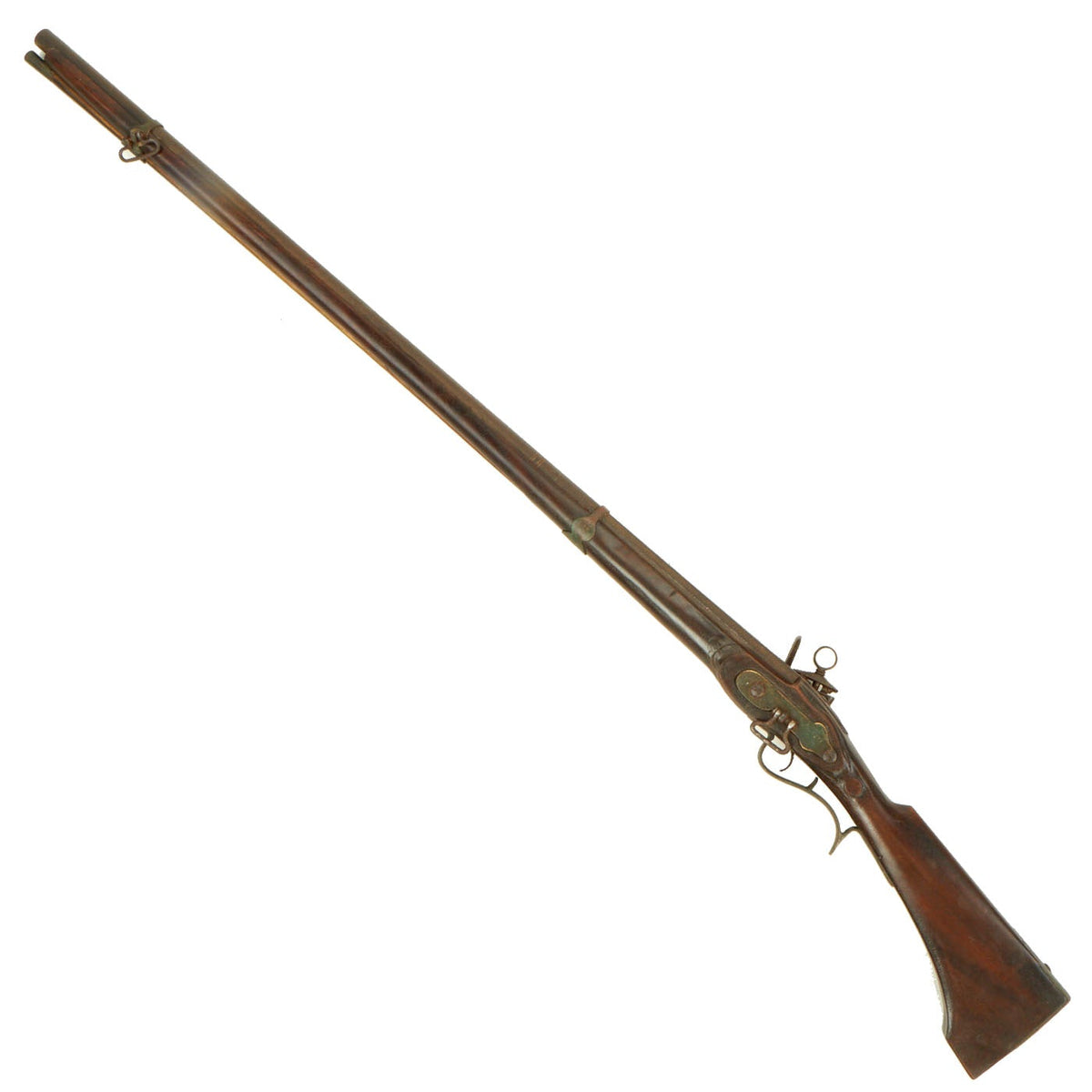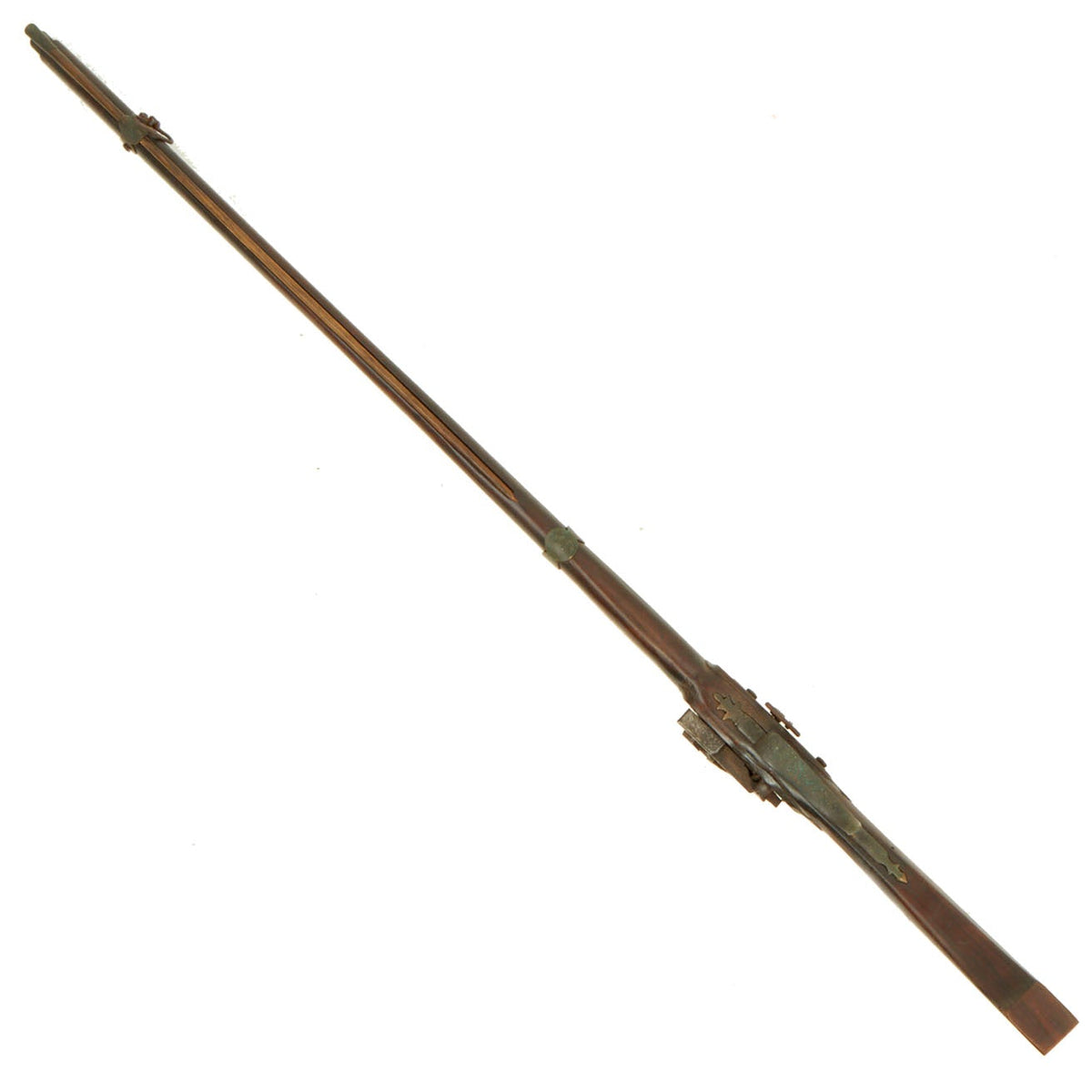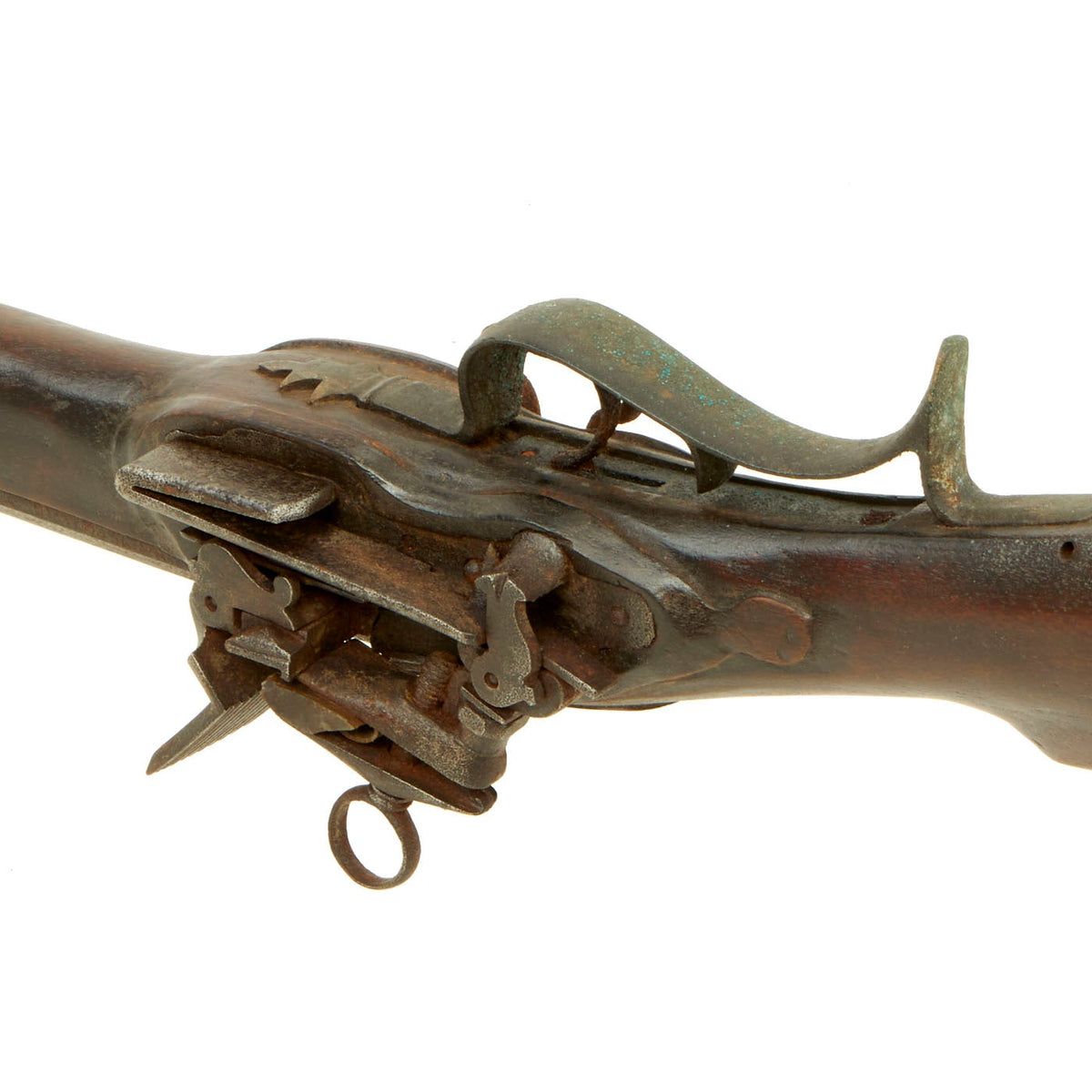Original 18th Century Spanish Escopeta Miquelet Flintlock Musket – Brass Mounted in Attic Find Condition Original Items
$ 2.295,00 $ 573,75
Original Item: Only One Available. This is a lovely Spanish Flintlock Musket known as an Escopeta, made with a MIQUELET lock, a predecessor / alternative to the standard flint lock design in use throughout most of Europe. It shows typical mid 18th Century rough construction using all brass mounts, with sling swivels mounted on the left side. As Spain maintained many colonies at that time these muskets were scattered All over the globe and as a result are very hard to find today.
Measuring about 55 1/2 inches in overall length, the barrel is 40 inches long and part-octagonal, with a bore of about .69 of an inch. The musket comes with a replacement ramrod, and is overall in “attic find” condition. The wood stock is in great shape with a lovely polished look, however the steel and iron components of this Escopeta have unfortunately suffered from oxidation over the centuries. The trigger is currently frozen, so while the hammer on the lock does pull back and lock into place, the half and full cock latches need to be pushed back in by hand at present. The frizzen spring is also broken, and there is surface rust on a lot of the lock components.
A very nice “attic found” example of an obsolete firing system, ready to restore of display as is!
Specifications:
Years of Manufacture: Circa 1750-60
Caliber: .79″ Musket
Ammunition Type: Lead Ball & Powder
Barrel Length: 40 inches
Overall Length: 55.5 inches
Action: Flintlock Miquelet
Feed System: Muzzle-Loaded
History of the Miquelet Lock:
Miquelet lock is a modern term used by collectors and curators, largely in the English-speaking world, for a type of firing mechanism used in muskets and pistols. It is a distinctive form of snaplock, originally as a flint-against-steel ignition form, once prevalent in Spain, Portugal, Italy, the Balkans, North Africa, Ottoman Empire and throughout Spain’s colonies from the late 16th to the mid 19th centuries. Later they were seen in percussion form, either as originally produced, or converted.
The term miquelet lock was not recorded until the 19th century, long after the appearance of the mechanism in the 16th century, and is of uncertain origin. One commonly held view is that it was coined by British troops in the Peninsular War to describe the style of musket used by the Miquelet (militia) that had been assigned to the Peninsular Army of the Duke of Wellington.
NOTE: International orders of antique firearms MUST be shipped using UPS WW Services (courier). USPS Priority Mail international will not accept these. International customers should always consult their country’s antique gun laws prior to ordering.
Fast Shipping with Professional Packaging
Thanks to our longstanding association with UPS FedEx DHL, and other major international carriers, we are able to provide a range of shipping options. Our warehouse staff is expertly trained and will wrap your products according to our exact and precise specifications. Prior to shipping, your goods will be thoroughly examined and securely secured. We ship to thousands clients each day across multiple countries. This shows how we're dedicated to be the largest retailer on the internet. Warehouses and distribution centres can be located throughout Europe as well as the USA.
Note: Orders with more than one item will be assigned a processing date depending on the item.
Before shipping before shipping, we'll conduct a thorough inspection of the items you have ordered. Today, the majority of orders will be delivered within 48 hours. The delivery time will be between 3-7 days.
Returns
The stock is dynamic and we cannot completely manage it because multiple stakeholders are involved, including our factory and warehouse. So the actual stock may alter at any time. It's possible that you may not receive your order once the order has been made.
Our policy is valid for a period of 30 days. If you don't receive the product within 30 days, we are not able to issue a refund or an exchange.
You can only return an item if it is unused and in the same state as the day you received it. You must have the item in its original packaging.
Related products
Uncategorized
Australian WWII Owen MK1 Machine Carbine SMG Custom Fabricated Replica with Sling Original Items
Uncategorized
Uncategorized
Uncategorized
Uncategorized
Uncategorized
Uncategorized
Angolan Rebel 1970s era 60mm Inert Display Mortar from Angolan Civil War Original Items
Uncategorized
Uncategorized
Uncategorized
Uncategorized
Uncategorized
Uncategorized
Uncategorized
Uncategorized
Uncategorized
Uncategorized
Uncategorized













































































